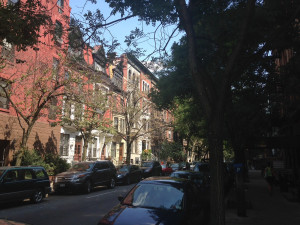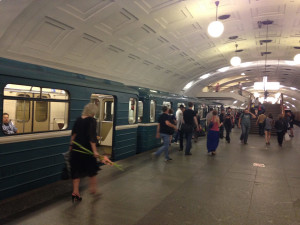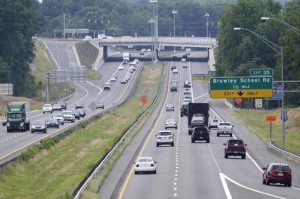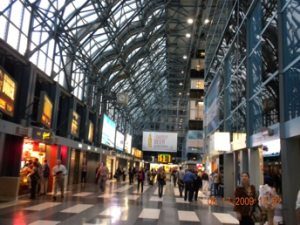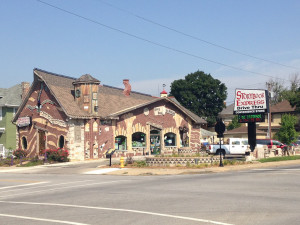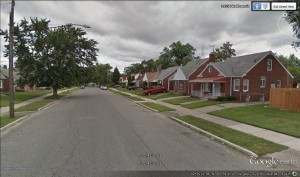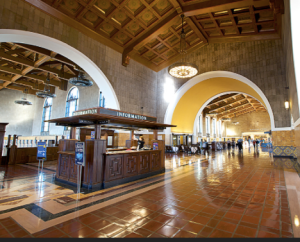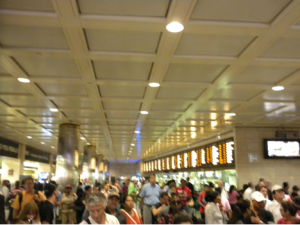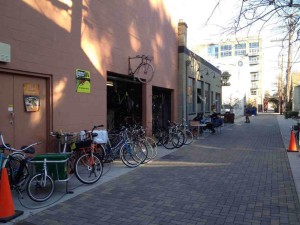So many of the complaints about density seem to revolve around all the supposed negative affects of congestion, as well a general sense of the inhumanity of high density living, which in the popular mind is associated with the proverbial "concrete jungle" and a forest of skycrapers. I can understand why many people want a house on a big lot. On the other hand, high density living, done right, can be extremely livable, humane, and even uncongested. When I lived in Chicago I frequently would have people tell me that they couldn't imagine … [Read more...]
Transport in Moscow
I was in Russia last week and plan to share a few relevant posts from the trip. Since you can easily find better photos of places like the Kremlin than I'll ever take online, when it comes to Moscow I'm going to focus on more planning and transport items. There's a lot of other commentary I might make, and if you want to read it, be sure to sign up for my exclusive content by email if you haven't already, because I may write up further observations on the political scene there. Writing anything positive about public space and transport in … [Read more...]
Why Are US Rail Transit Construction Costs So High?
It's no secret to readers here that US rail transit construction costs are far out of line vs. other countries. David Schleicher, a law professor at Yale, recently co-authored an article examining some potential reasons why. I crossed paths with David last week and recorded this short podcast with him delving into the matter. If the audio embed doesn't display for you, click over to listen on Soundcloud. … [Read more...]
More Privatization Pain For the Public in North Carolina
Privatization done right can be a great boon. Done poorly, it can harm the public for decades. We see another example of the latter ongoing in North Carolina (h/t @mihirpshah). The Charlotte Observer reports: The N.C. Department of Transportation’s contract with a private developer to build toll lanes on Interstate 77 includes a controversial noncompete clause that could hinder plans to build new free lanes on the highway for 50 years. The clause has long been part of the proposed contract. But it was changed in late 2013 or early 2014 to … [Read more...]
Chicago’s Secondary Stations: Little Engines That Could…And Should
This is part of the series North America's Train Stations: What Makes Them Sustainable or Not? To describe how central stations can help us evolve toward sustainable transportation, this series uses a middle category called “Economic Engines.” This category stimulates its surrounds. These three Chicago stations do that job well. Category: Economic Engines (click for all currently reviewed stations) Consolidated Scorecard: Click to view full scorecard Scorecard Summary: max pnts = 100 80 Ogilvie Transportation Center … [Read more...]
Cutting To Invest In Kokomo, Indiana
A whimsical fairy tale convenience store in Kokomo, IndianaBruce Katz at the Brookings Institution likes to talk about a paradigm called "cut to invest." The idea is to cut spending on operations and lower priority items in order finance investments in higher priority infrastructure or other projects. Nice theory, but who is actually doing it? One example is Kokomo, Indiana. It's not the mythical tropical island paradise you may have heard about from the Beach Boys. Instead it's a small industrial city of around 57,000 people about 45 miles … [Read more...]
The Uniqueness of Detroit’s Housing Stock
[ I've posted a number of pieces by Pete Saunders here in the past. He's not just a great analyst generally, he's particularly great on Detroit. His post laying out nine reasons why Detroit failed has more page views than any other article in Urbanophile history. (The top four posts are all about Detroit, showing the powerful hold that city has on the public consciousness). In his blog, Corner Side Yard, he's bee revisiting that post to go in depth on each of his nine points. Today I'm pleased to be able to repost his analysis of Detroit's … [Read more...]
Los Angeles Union Station: Looks Great And Works Well, Too!
This is part of the series North America's Train Stations: What Makes Them Sustainable or Not? Photo of welcome desk looking into the grand waiting room on the right and the former ticketing hall on the left; courtesy of Wikimedia Commons Let me recap the theme of this series: to compete against the car and win over commuters, stations must ease connections between modes. How LA does this matters, nationwide, for it helps build a strategy that breaks transit out of today’s trap of red ink and taxpayer dissatisfaction. Transit’s case … [Read more...]
New York Penn Station: Taming the Beast
[ This week Robert Munson returns to his look at North America's central train stations with a look at New York's infamous "beast" - Pennsylvania Station. He picks up after his look at the "beauty" that is Grand Central Terminal - Aaron. ] This post is part of a series by Robert Munson called North America’s Train Stations: What Makes Them Sustainable — or Not? Showing the grandeur of the original Penn Station (destroyed 1963), this main waiting room approximated the volume of St. Peter’s Cathedral in Rome. Photo via Wikimedia … [Read more...]
Blind Alleys of Urban Branding
Liestal Alley in SacramentoIt's the early morning of January 20th and I'm being driven around Sacramento by a friend of mine in hopes of finding my stop for the day, a popular coffeehouse in Midtown called Old Soul Coffee. Having navigated a series of one-way streets for nearly 30 minutes, it became apparent that this place was more than a bit tricky to find. We stopped on a side street to reorient ourselves, and discovered a clue that provided the insight our struggle needed: the coffeehouse is actually located in an alleyway adjoining the … [Read more...]
- « Previous Page
- 1
- 2
- 3
- 4
- 5
- 6
- …
- 12
- Next Page »
